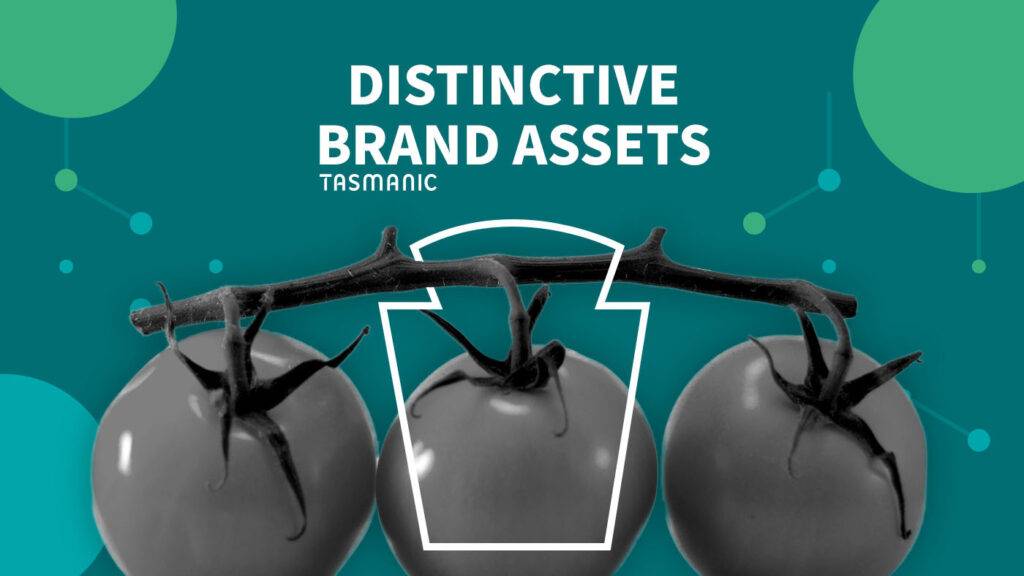
Last updated December 19, 2024
Introduction
As a brand, you want to leave an indelible impression. Sure, you do that by having your customer service in order, making a superior product or offering excellent terms and conditions, but Distinctive Brand Assets (DBAs) also help you strengthen your brand identity. We like to tell entrepreneurs how!
What are DBAs?
DBAs are Distinctive Brand Assets. They are those elements or components of your brand identity that set you apart and make you recognizable to customers.
It's not just the external or visual features of your brand, such as your logo and corporate identity. Colors, pay-offs and sounds can also be so striking that consumers immediately know it's your brand. They act as landmarks for your brand along its many touchpoints.
When a consumer enters a buying situation, a number of brands will pass through the brain. Distinctive brand assets can ensure that your brand is among the potential brands. Because of the DBAs, the brand will be activated in the brain. Every brand has brand assets, but when they become "distinctive," it will have a positive impact on brand growth and therefore market share (Romaniuk & Sharp, 2016). DBAs then cause the brand to become more dominant in our brains and have more associations, making us think of the brand faster (top of mind) or our eye falls on it faster. Marketing professor Byron Sharp calls this 'mental availability'. But this is only true when the brand asset is well-known and unique! We walk past brands we don't know well or have no associations with faster. They have not established a position in our brain.
Examples in practice
So we speak of DBAs when it is so obvious that it is about your brand that mentioning your name or showing your logo is already unnecessary. Well-known examples are:
- The 'golden arches' as a symbol of McDonald's
- Coca-Cola's signature bottle shape
- Duracell's indefatigable rabbit
- Vodafone's recognizable jingle
- The slogan 'Just do it' and Nike's 'swoosh'
- Celebrities like George Clooney for Nespresso
Fame and uniqueness
For the strength of your brand assets, you can look at "fame" and "uniqueness" (Romaniuk & Sharp, 2016). An asset can be as attractive as it is, if it is not unique and shared with multiple other brands, it does not provide the necessary recognition. For more fame (familiarity), increase the frequency and number of channels where you display the asset. For more uniqueness, you need to make the asset more specific so you don't have to share it with competitors. Sharpen it by making it more extreme or adding other assets. Just the color yellow is not unique, but in some form it is already more specific.
The DBA Grid
Below you can see in the DBA Grid whether a particular asset can become a DBA:
- Avoid solo use: preferably do not use. Do you want to do this anyway? Then it needs strong brand guidance because otherwise it can also lead to competitors.
- Use or lose: this element could be used to replace your brand name in ads. But keep investing in it to avoid decay!
- Ignore or test: this element is unknown in the market. There is some work to be done here to give value to it.
- Investment potential: this element has potential, but more consistent use and linkage to the brand name is needed.

How do you ensure strong DBAs?
Not all of your Distinctive Brand Assets are immediately strong. As an entrepreneur, do you want to succeed in developing strong DBAs? Or do you want to build your new brand's association network? How do you make sure your brand gets picked out among all your competitors? We would like to give you some tips:
- Drop your brand name in the first (crucial) attention phase of an ad (Romaniuk, 2018). Modesty is not necessary and need not come at the expense of likeability. Especially ads in volatile environments need to stand out within a short period of time, think social ads. Therefore, make sure your logo is definitely visible in your social ads and display banners.
- Have your DBAs consistently and structurally reflected in all your communications and in every campaign. Do this across multiple channels to reach a larger group of potential customers.
- Have a great corporate identity created and use it consistently. Is your new corporate identity a big change in brand identity? Then implement it in increments.
- Introduce your DBAs one at a time. This way they are the best for the brain to process and you can monitor or adjust the increase in familiarity and uniqueness for each asset.
- Building strong brand assets takes years, so give them time to grow and don't change course if you don't see a difference within a year. Think for the long term, so make sure your desired brand image is long-lasting.
- Take a close look at your current assets. If an asset has been scoring low on fame and uniqueness for years, replace it with another asset. Which assets can stand on their own to be recognizable and which need the context of other assets to do so?
Conquering van Category Entry Points (CEP’s) creates a stronger brand memory network. And the stronger and larger the brand memory network, the easier it is to create new associations. Brand assets form the glue in this memory network and link branding activities to your brand. Together this creates a snowball effect.
Resources
Romaniuk, J. (2018). "Building distinctive brand assets." Oxford University Press.
Romaniuk, J. & Sharp, B. (2016). "How brands grow." South Melbourne, Victoria : Oxford University Press.
Romaniuk, J. & Sharp, B. (2016). "How brands grow, part 2. Including emerging markets, services, durables, new and luxury brands." Oxford University Press South Melbourne, Victoria.
Is your company missing opportunities?
Our pay is based on your results.

















 Team
Team FAQ
FAQ Vacancies
Vacancies Contac
Contac AWR
AWR Ahrefs
Ahrefs Channable
Channable ContentKing
ContentKing Leadinfo
Leadinfo Optmyzr
Optmyzr Qooqie
Qooqie Hubspo
Hubspo Semrush
Semrush




